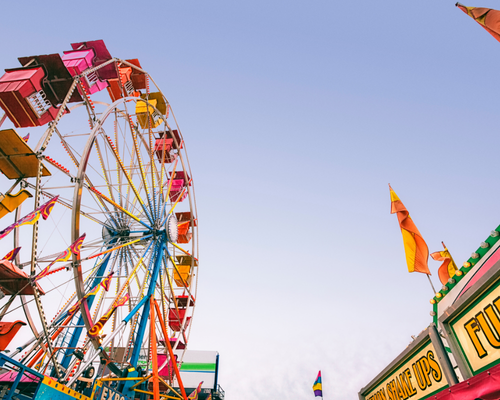It’s that time of year again—carnival season is here! The adrenaline rush, stomach-dropping descents, and heart-stopping curves offer unparalleled excitement. But what happens when the thrill turns into an accident? Handling injuries on carnival rides is a topic that deserves attention and understanding. Let’s dive into the world of carnival ride injuries, exploring the various types of accidents that can occur while providing practical advice on how to handle them. Knowing how to respond and who is responsible for carnival ride injuries can provide confidence and peace of mind.
Understanding the Risks and Potential for Injuries at Carnival Rides
Carnival rides are designed to provide exhilarating experiences, but they also come with inherent risks. The combination of high speeds, sudden movements, and mechanical components means that accidents can happen. Understanding the potential for injuries is the first step in being prepared.
One common type of injury at carnival rides is whiplash. This occurs when the body is jolted suddenly, causing the neck and head to snap forward and backward. Whiplash can result in neck pain, stiffness, and headaches. Another common injury includes bruises and cuts from collisions with other riders or objects on the ride.
It’s important to note that carnival ride injuries can range from minor to severe. While some injuries may heal with time, others can be life-threatening or result in long-term disabilities. This is why it’s crucial to take all necessary precautions to prevent accidents and respond appropriately if they do occur.
Safety Regulations and Inspections for Carnival Rides
To ensure the safety of carnival-goers, carnival rides are subject to regulations and inspections by relevant authorities. These regulations vary depending on the location and jurisdiction, but they generally cover aspects such as ride design, maintenance, and operation.
Carnival operators are responsible for ensuring that their rides comply with safety regulations. This includes regular inspections, maintenance, and testing to identify any potential issues or hazards. Operators must also provide proper training to ride operators to ensure they can operate the rides safely.
Additionally, carnival rides are often inspected by independent third-party organizations or government agencies. These inspections aim to verify that the rides meet industry standards and are safe for public use. Inspections may include structural checks, mechanical tests, and assessments of safety features like restraints and emergency stop systems.
Steps to Take Immediately After an Injury on a Carnival Ride
If you or someone you know is injured on a carnival ride, it’s essential to take immediate action to ensure the well-being of the injured person and gather important information for potential legal or insurance purposes.
- Seek Medical Attention: Even if the injury seems minor, it’s important to have a medical professional assess the extent of the damage and provide appropriate treatment. Some injuries may not show immediate symptoms but could worsen over time if left untreated.
- Document the Incident: While waiting for medical assistance, document the injury and the accident scene. Take photos or videos of any visible injuries, the ride itself, and any potential hazards or malfunctions. Gathering witness statements can also be valuable in providing a clear account of what happened.
- Report the Incident: Once the injured person has received medical attention, report the incident to carnival organizers and local authorities. This helps ensure that the incident is properly investigated and that any necessary actions are taken to prevent similar accidents in the future.
Legal Considerations and Potential Liability for Carnival Ride Injuries
In cases where carnival ride injuries are severe or result in long-term consequences, pursuing legal action may be necessary to seek compensation for medical expenses, pain and suffering, and other damages.
Determining liability for carnival ride injuries can be complex, as multiple parties may share responsibility. Potential defendants can include the carnival operator, ride manufacturer, maintenance crew, and even other riders. Establishing negligence or a breach of duty of care is crucial in holding the responsible party accountable.
